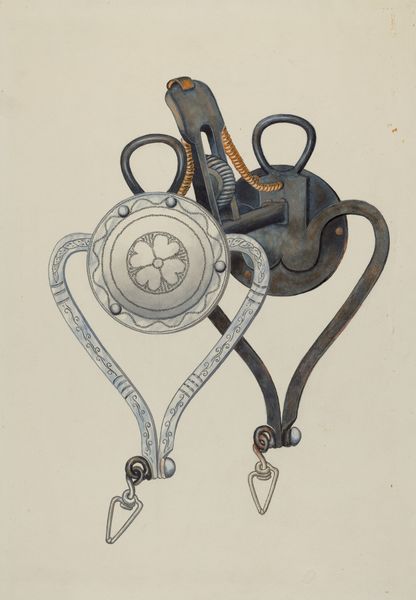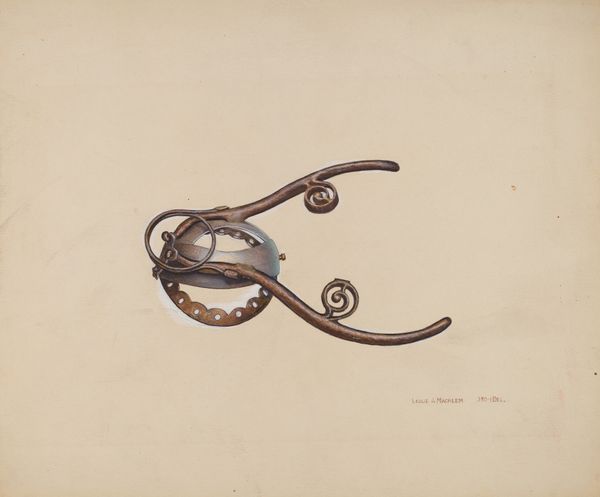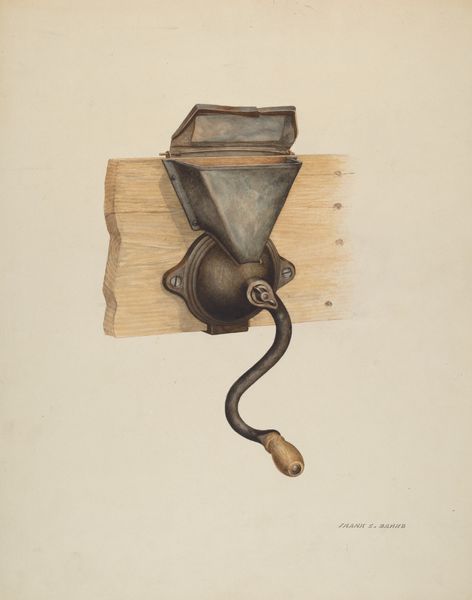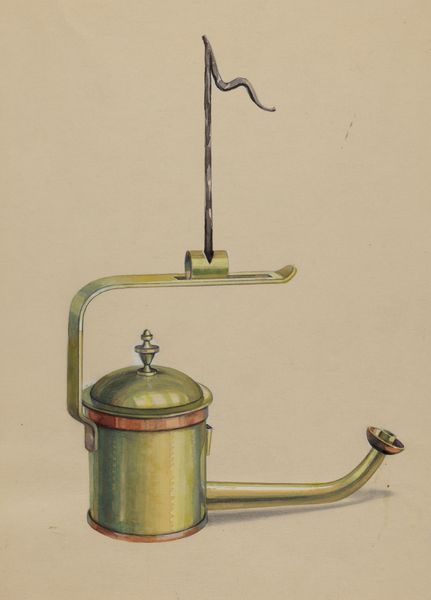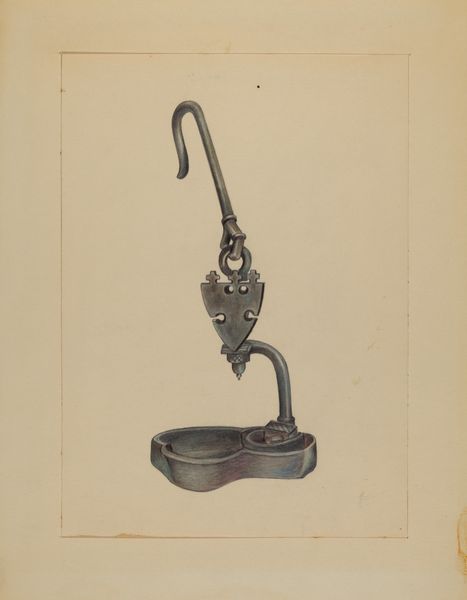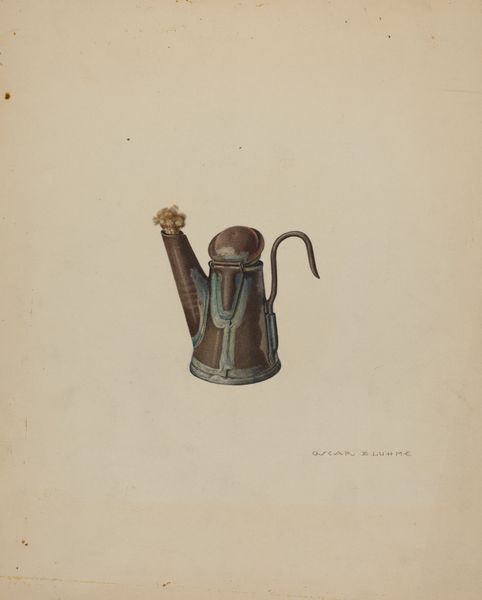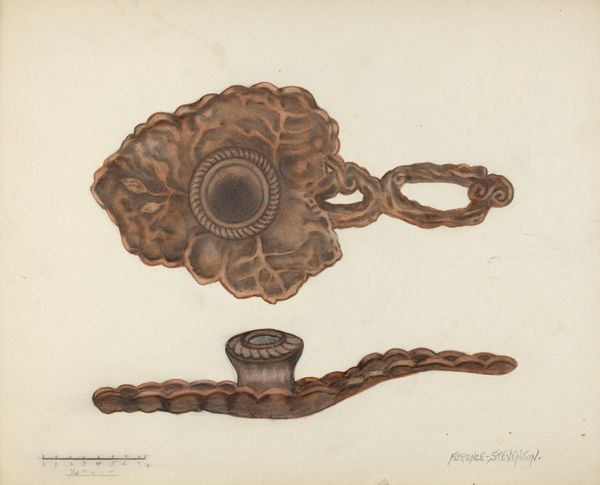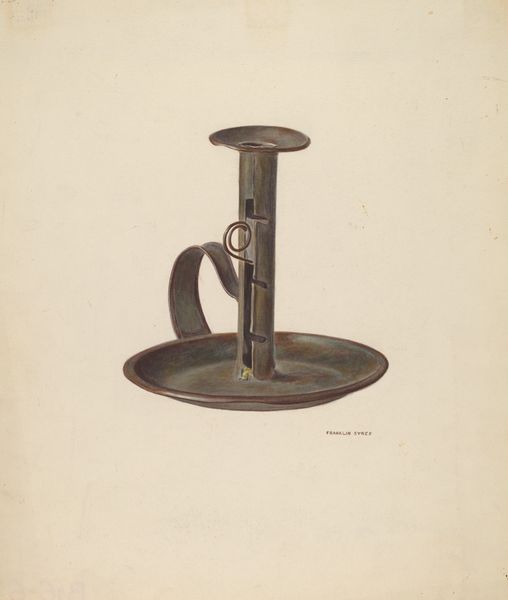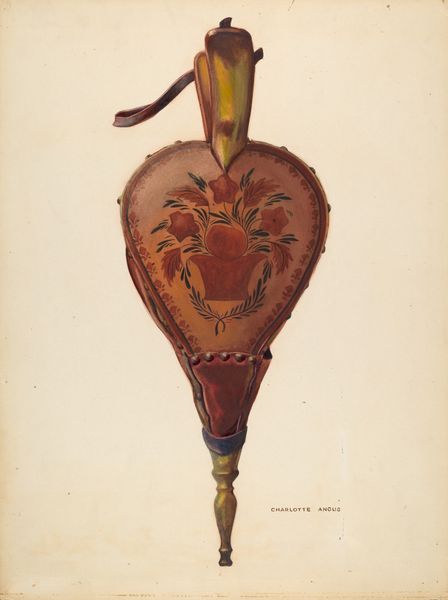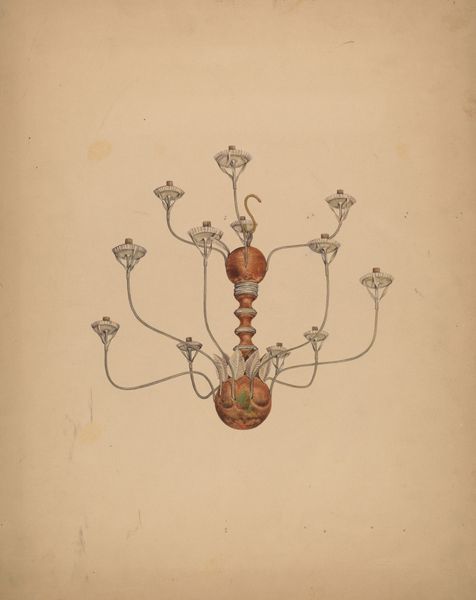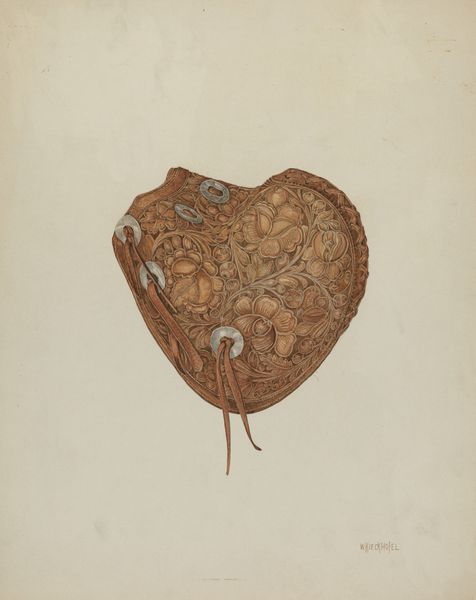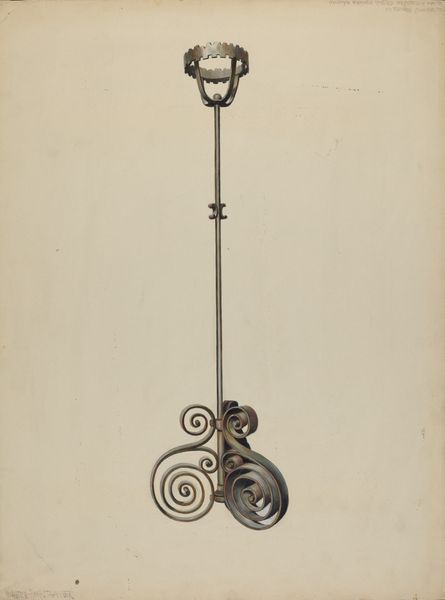
drawing, watercolor
#
drawing
#
watercolor
#
watercolour illustration
#
watercolor
Dimensions: overall: 35.5 x 26.6 cm (14 x 10 1/2 in.) Original IAD Object: 7 1/4" high; 5 1/2" wide
Copyright: National Gallery of Art: CC0 1.0
Curator: The watercolor work before us is called "Bit," created around 1939 by Harry Mann Waddell. My first impression is that this image, on its blank background, captures the delicate tension between ornamentation and brutal functionality. Editor: It certainly projects that. It’s also a powerful image for those who want to question control and the tools associated with its manifestation through enforced actions, specifically domination. In many cultures, horses represent freedom and are essential contributors to human labor and transportation, especially among certain identity and racial groups. So how do we perceive this image today in regard to such cultural differences, power imbalances, gender issues, or individual ethics and morals? Curator: A fair assessment. I can see that one interpretation of it may evoke concerns regarding the power dynamics. But what if the intention behind this work was, indeed, to explore just that? A commentary on those structures within certain societal contexts. In fact, at the time, horses represented status in American culture, particularly the Western cowboy culture—what statement do you believe the artist was attempting to convey here, in such context, about privilege, class, or social stratification in American society at that moment in time? Editor: By displaying what appears to be a well-preserved bridle? It seems more about capturing a moment that shows pride within a white dominated and socially sanctioned cultural landscape, and the importance and elegance that has always been imposed by Western tropes through imagery like this and reinforced and rewarded across all areas of our society. We should invite our visitors to ponder these connections that are not, in my opinion, disconnected. Curator: It's interesting to examine this period with attention to art patronage. Were artistic depictions of this bit serving as displays of financial capabilities, promoting the dominant cultural vision, and possibly reflecting upon, or deliberately ignoring the contributions of, say, marginalized individuals? Perhaps through critical interpretation, we can question the intended meaning while recognizing its intersectional associations and consequences. Editor: Ultimately, I feel this image invites a very complex consideration of control and how we still grapple with it across different spheres, which still raises difficult issues to which there aren’t, and might never be, definite conclusions or understandings.
Comments
No comments
Be the first to comment and join the conversation on the ultimate creative platform.
